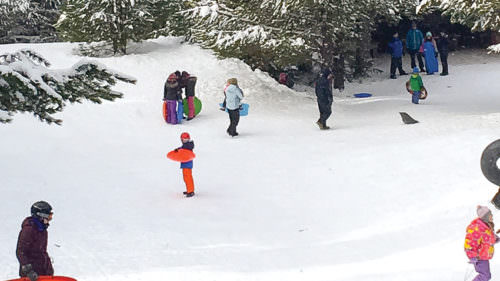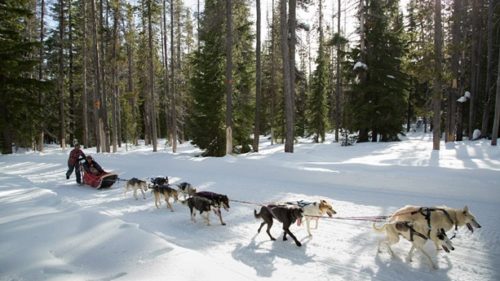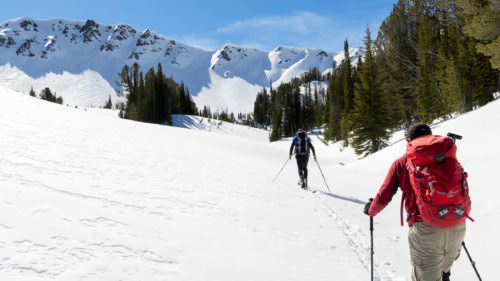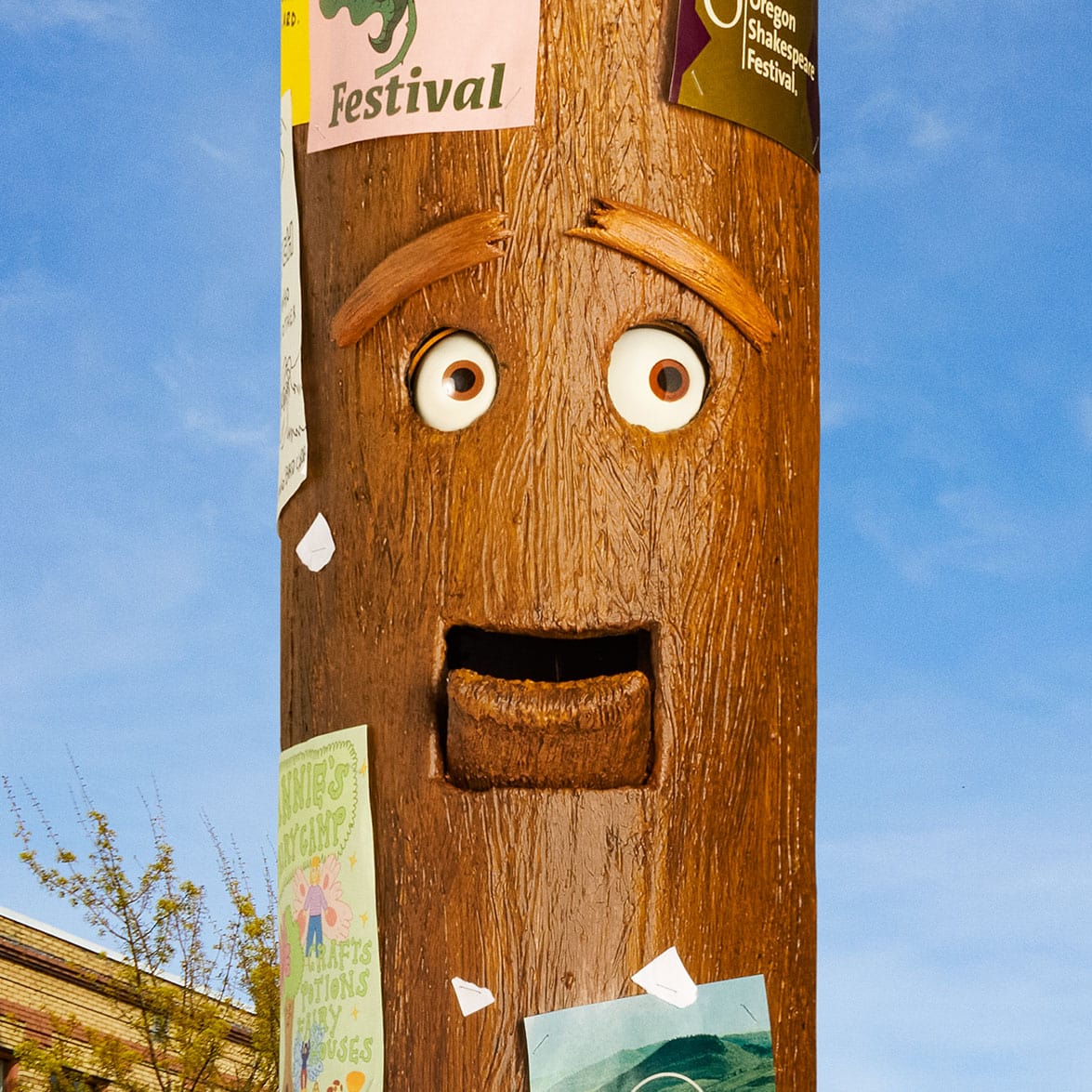A new world opened up above the snow-laden evergreens the first time I crunched toward the summit of Bennett Pass, with Mt. Hood standing sentinel over the sparkling valley. It looked like I was trapped in a snow globe.
As a frequent hiker and paddler, I’m most familiar with the state’s lush forests and cool blue waterways. But in winter, snowshoeing Oregon’s expansive trails and undulating alpine passes has become my next favorite adventure. It makes me eager for each snowfall, when I can trade in my hiking boots for a pair of snowshoes.
You can get in on the action too. Snowshoeing is one of the most accessible — and underrated — ways of exploring the state in the cooler months, with white-dusted spots an easy haul from the big city to remote backcountry routes reserved for experienced trekkers.
Find more inspiration on guided snow tours across the state, and always check weather and road conditions before you set out. To skip the hassle of driving and parking, it’s wise to ride to Mt. Hood without a car from the Portland region, Willamette Valley and Gorge towns. Columbia Area Transit Park and Ride is now serving visitors to Mt. Hood Meadows as well as to Government Camp, to connect with the Timberline Resort Shuttle and Mt. Hood Express.
Where should you explore? Start with these top spots, from easy to advanced.
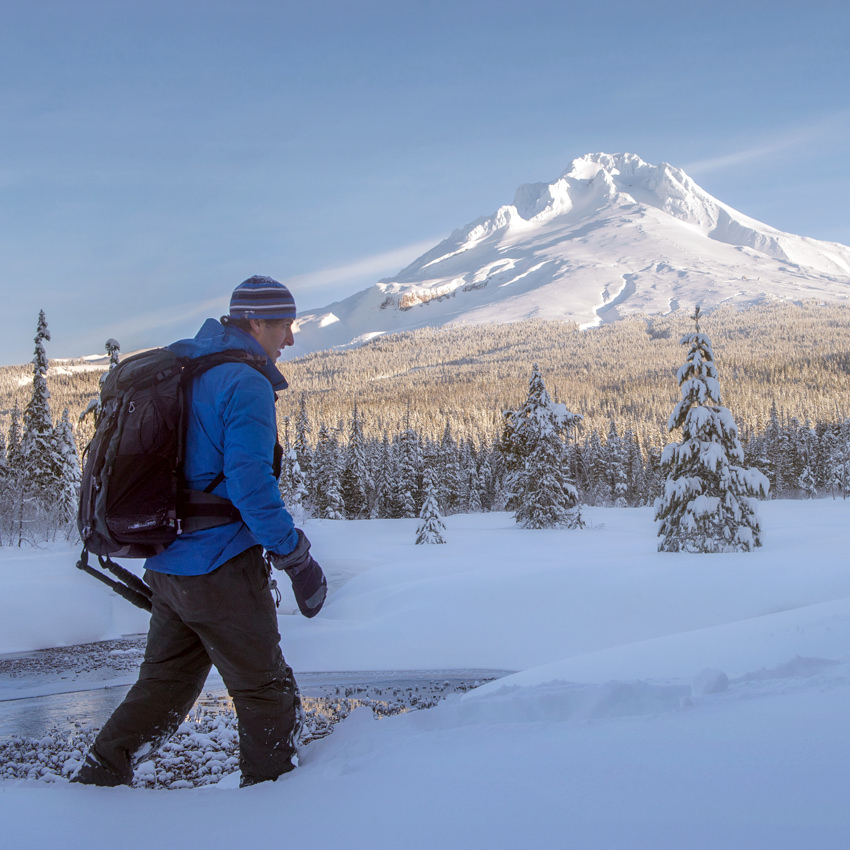
Trillium Lake
Go for: Alpine lake and mountain views
Region: Mt. Hood
Pass/fee: Sno-Park Permit
Difficulty: Easy
Among the most popular of Mt. Hood’s many Sno-Parks, the well-marked, 4.4-mile loop at Trillium Lake rewards you with fantastic mountain views on clear days. Snowshoers here may likely be joined by cross-country skiers eyeing a chance to catch the towering Mt. Hood overlooking the pristine lake ringed with powder-dusted evergreens. Note: This popular Sno-Park does not have a bathroom at the trailhead, though there is an outhouse on the far end of the lake.
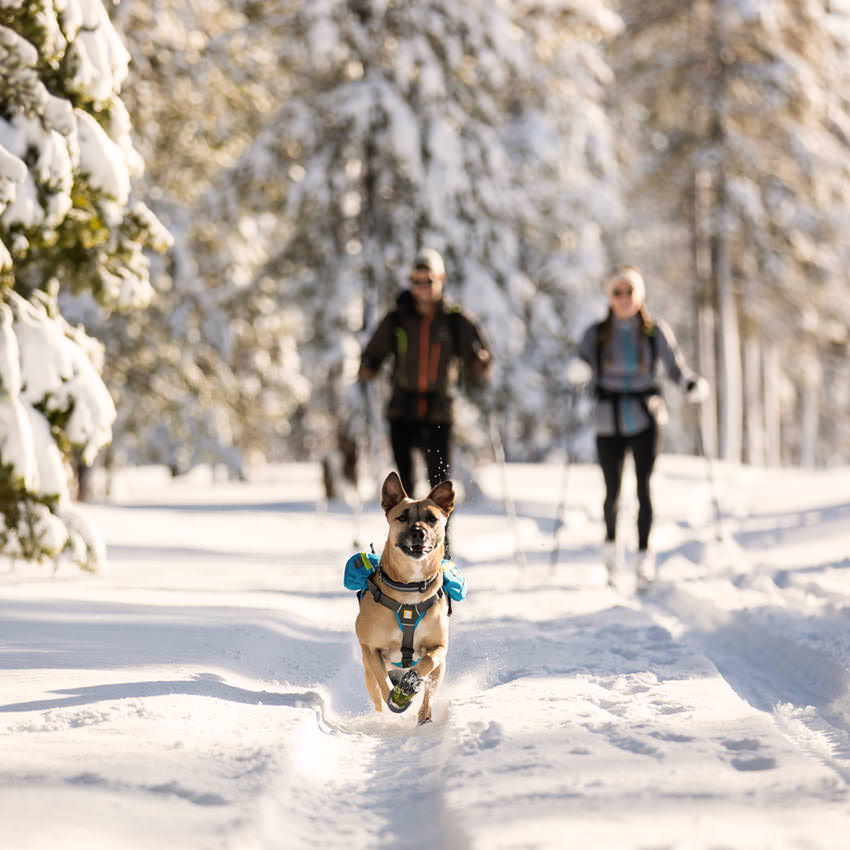
Wanoga Sno-Park
Go for: Family- and dog-friendly trail
Region: Central Oregon
Pass/fee: Sno-Park Permit
Difficulty: Easy
A flat 2-mile loop draws both beginners and veteran snowshoers for an easy, breezy outing at this Central Oregon Sno-Park. Especially popular with dog owners, the main loop weaves in and out of lodgepole pine meadows and is groomed four days a week. A nearby warming hut gives those making multiple trips a chance to warm up. Families, too, will find bountiful options here with the adjacent sledding and tubing area.
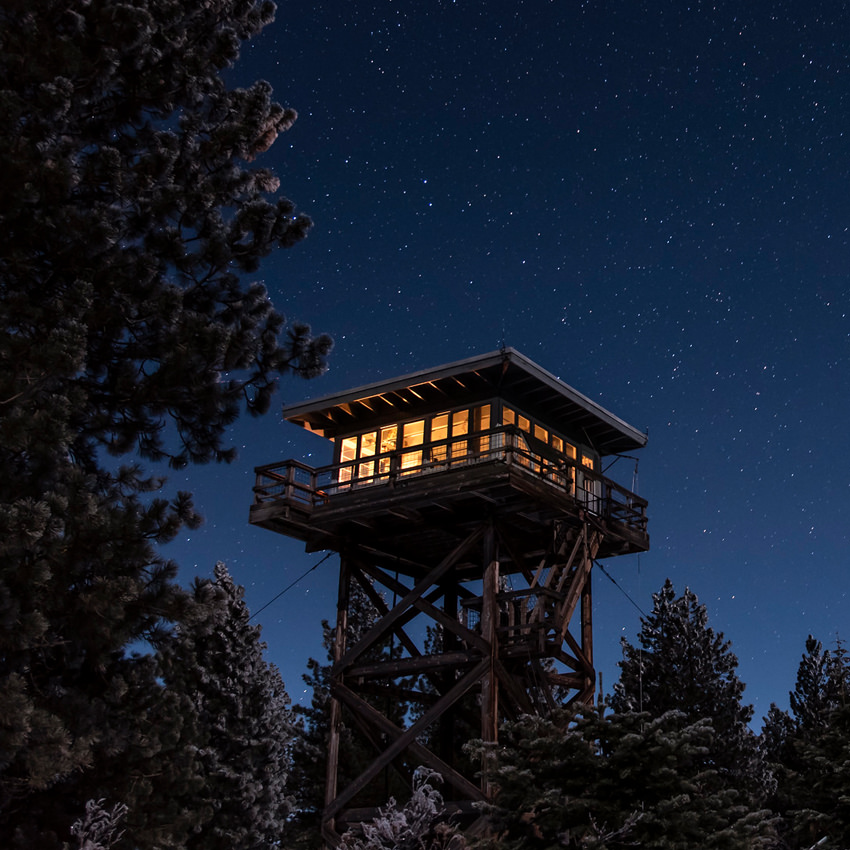
Billy Bob Sno-Park
Go for: Mountain views with fewer crowds
Region: Mt. Hood
Pass/fee: Northwest Forest Pass, $5/day or $30/year
Difficulty: Easy to challenging, depending on route
This quiet and secluded Sno-Park is popular for motorized recreation but offers a range of experiences for snowshoers, too. Take a groomed trail alongside the snowmobiles or one less traveled. Both have quintessential winter views — Mt. Hood encased in powder-dusted ponderosa pine and Doug fir, even on cloudy days. If you’re lucky, snowshoers can also snag a stay at the typically booked Fivemile Butte Lookout, which is only accessible by a 5.5-mile (round-trip) snowshoe, cross-country ski or snowmobile trek.
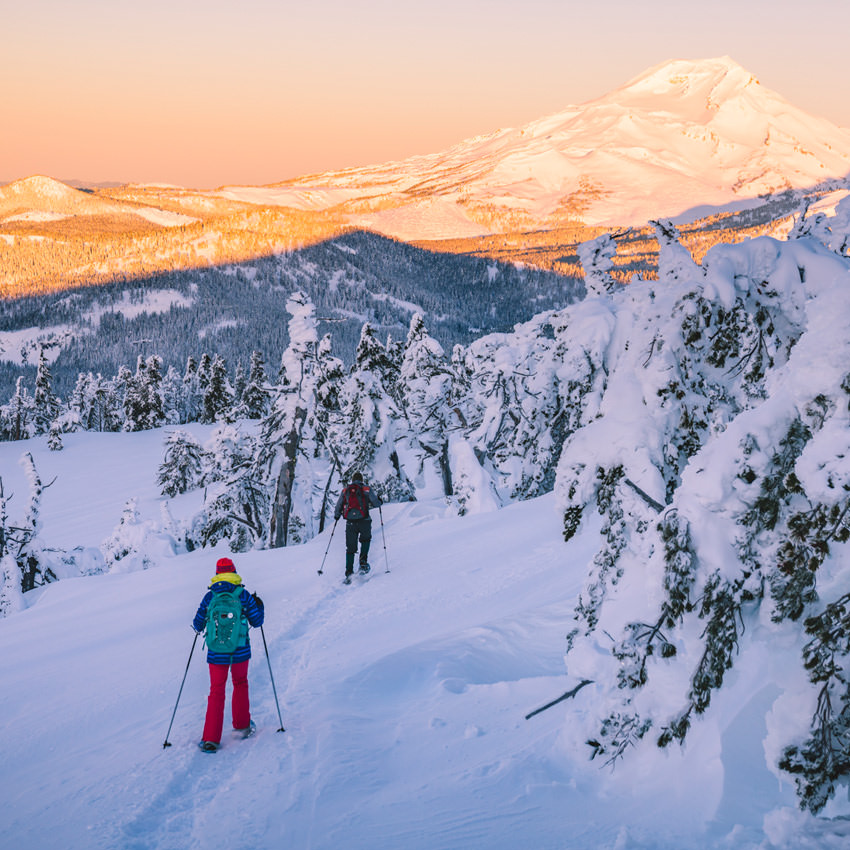
Dutchman Flat/Tumalo Mountain
Go for: Multimountain views
Region: Central Oregon
Pass/fee: Sno-Park Permit
Difficulty: Easy to challenging, depending on route
Enjoy an easy, crisp stroll while nestled among a sextet of Central Cascades Mountains at this picture-perfect trailhead. Cradled by Mt. Bachelor, Tumalo Mountain, Three Sisters and Broken Top, snowshoers can explore the Todd Lake area, winding through lodgepole and hemlock forest, on 3 miles of designated trails to avoid cross-country skiers or motorized vehicles, or you can courteously share the road by avoiding set ski tracks.
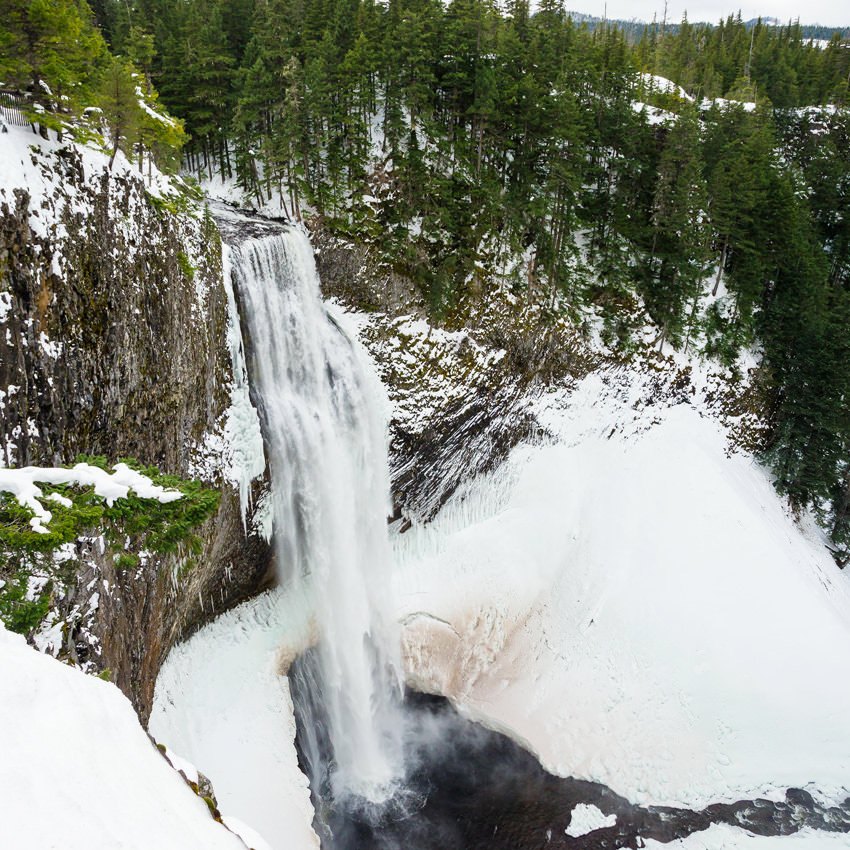
Salt Creek Falls/Diamond Creek
Go for: Icy, often frozen waterfalls
Region: Willamette Valley
Pass/fee: Sno-Park Permit
Difficulty: Easy to challenging, depending on route
In the winter months, the 286-foot Salt Creek Falls transforms into a snowy wonder, shielded by shards of jagged ice and freezing mist, accessible by a 1.4-mile out-and-back hike. Longer, more difficult snowshoe routes wind through woodlands to Diamond Creek Falls (a 5-mile loop) or up onto Fuji Mountain Road for mountain views of Diamond Peak and Willamette Pass (an 8-mile loop). The Fuji Shelter offers trekkers to this viewpoint a chance to warm up their toes around a wood stove.
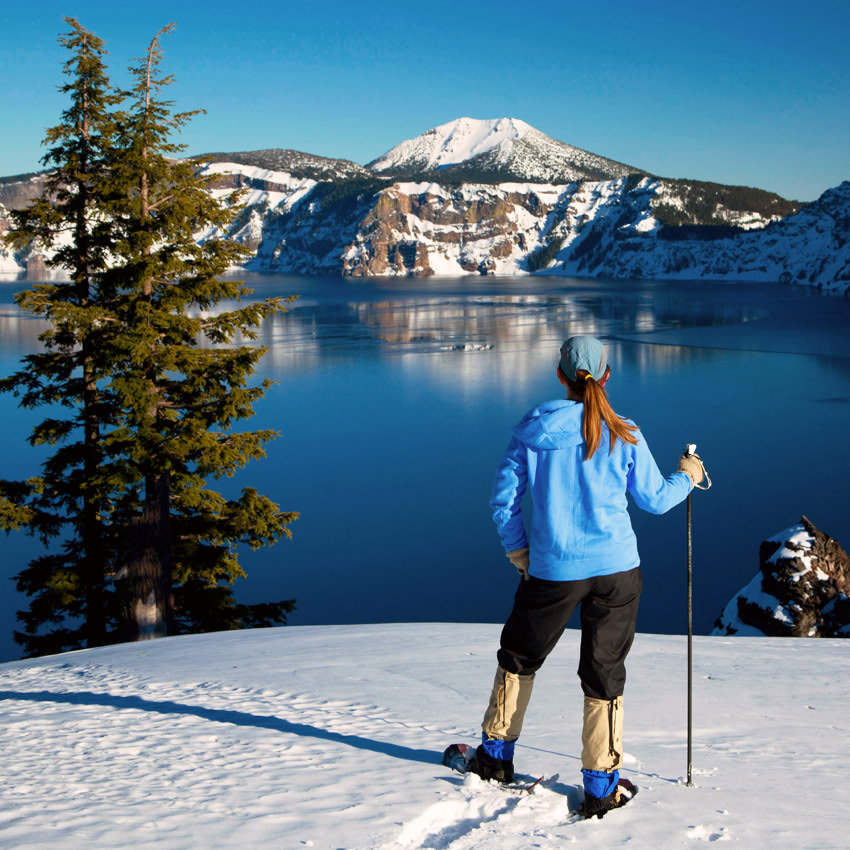
Crater Lake National Park
Go for: The country’s deepest lake
Region: Southern Oregon
Pass/fee: $15/week/car or a National Park Pass
Difficulty: Easy to challenging, depending on route
This may be the snowshoe trip to end all trips. Home to the country’s deepest lake — which fills a 1,943-foot-deep caldera with pristine, sapphire-hued water — Crater Lake gets astounding amounts of snow, creating miles of crunchy snowshoeing routes. Maps of all routes, for both snowshoers and skiers, can be found in the park newspaper and are organized by difficulty. Or follow a ranger on a free guided 2-hour snowshoe walk through forests and snow-covered meadows near Rim Village, with snowshoes provided at no cost.
Another option is to book a guided Crater Lake snowshoe tour through the expert local guides at RogueTrotters. You’ll be able to sit back and truly enjoy the ride as you hop on a private shuttle in Ashland, enjoy the full-day guided tour at Crater Lake and then shuttle back to Ashland. Children 6 and up are welcome. Gear rentals, extra clothing layers, hand and foot warmers and hot chocolate are included.

Tenderfoot Trail
Go for: Secluded alpine treks
Region: Eastern Oregon
Pass/fee: Wilderness Visitor Permit, free at trailhead
Difficulty: Challenging to advanced
With the “Swiss Alps of Oregon” towering nearby (aka the Wallowa Mountains), the Tenderfoot Trail slices through wonderfully lesser-known snowy landscapes. Experienced snowshoers can keep going where the route intersects with the Aneroid Lake (East Fork) Trail #1804. From there, a mile north will take you to Aneroid Lake; alternately, heading south will bring you to the jaw-dropping Tenderfoot Pass overlooking the expansive Imnaha River drainage. You’ll likely be one of the only snowshoers on this trail, providing you and the mountains with ample quiet.
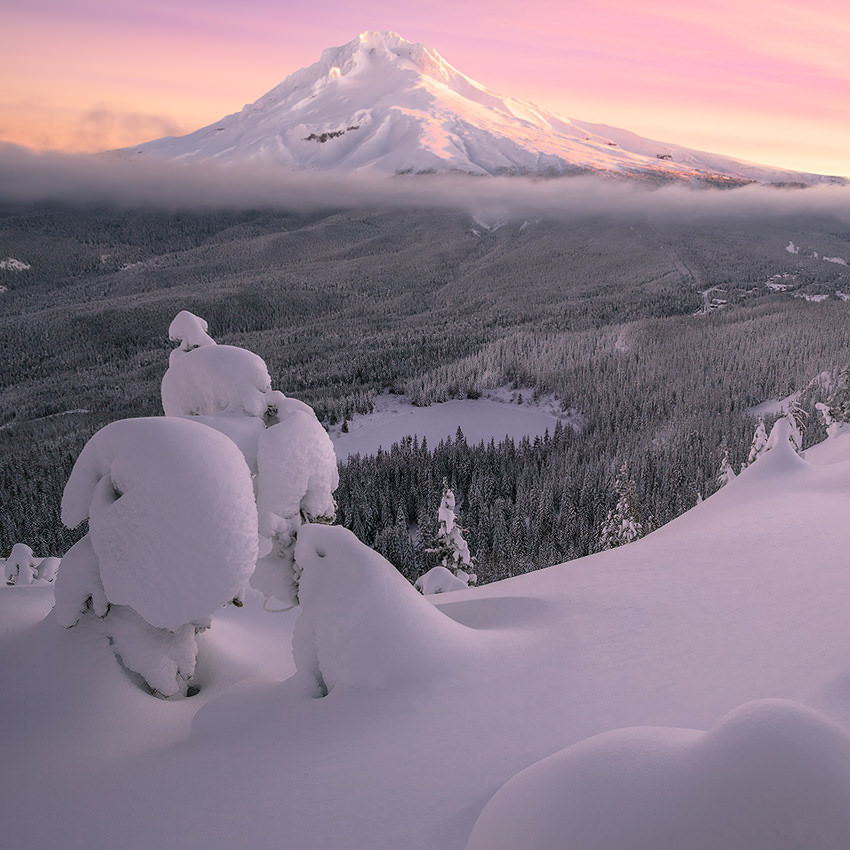
Tom, Dick and Harry
Go for: Unparalleled views of Mt. Hood
Region: Mt. Hood
Pass/fee: Sno-Park Permit
Difficulty: Challenging to advanced
A brand-new trailhead at the Skibowl West parking lot removes all the terror of attempting to find a spot on a busy snow day. With a more than 1,700-foot elevation gain over 8 miles, snowshoers will climb around Mirror Lake and up to a ridge with one of the grandest, most unobstructed views of Mt. Hood in the area. Keep in mind that this route is especially prone to avalanches; you can find forecasts and classes at the Northwest Avalanche Center and check out our tips below for more helpful resources.
When You Go
Try guided tours: First-time snowshoers might want to set out with a guided tour. A few favorite outfitters include Mt. Hood Meadows, local REI stores, Wanderlust Tours in Central Oregon and free ranger-led snowshoe walks at Crater Lake National Park.
Rent your gear: If you’re coming from Portland and don’t have your own gear, snowshoes can be rented and/or purchased from Next Adventure, Mountain Shop and the PSU Equipment Rental Center in Portland. In the Willamette Valley, head to Salem Summit Company in Salem, Peak Sports in Corvallis and Berg’s Ski Shop in Eugene. Central Oregonians should look to Bend’s numerous ski shops for snowshoes, like Powder House Ski & Snowboard, Pine Mountain Sports and Mountain Supply. And if you’re planning on trekking through the Wallowas, make sure to stop at La Grande’s Mountain Works for your pair.
Buy a permit: Before you go to a Sno-Park, you need to purchase a permit and a trail map at a DMV office or at a permit agent — typically sporting-goods stores like REI — for usage between November 1 and April 30. Find a full list of retailers here. Daily permits cost $4, three-consecutive-day permits are $9 and an annual pass is $25.
Be prepared: Whether you’re a seasoned winter enthusiast or it’s your first time snowshoeing, make sure to winterize your vehicle, check the road and weather conditions on TripCheck.com, and let someone know where you’re going. Backcountry visitors, especially, should check the avalanche forecast. If you’re an experienced snowshoer intending to head out into avalanche terrain, take an avalanche awareness course through SWS Guides at Crater Lake. You can find more about classes, forecasts and educational resources at the Northwest Avalanche Center.
Pack supplies: Snowshoers should make sure to pack the appropriate supplies for their trip. Short jaunts on well-marked, high-trafficked routes may only require snacks and water, while a longer, more strenuous hike through isolated areas may call for navigation tools, extra rations of food and water, wilderness first-aid preparedness, and layered clothing to adjust throughout the hike. Here’s a helpful checklist to get you started.
Take Care Out There: These well-known ways to Take Care Out There apply in winter, too. In recent years, littering has become a big problem at sno-parks. When the snow melts, that leaves a lot of trash to clean up. Do your part and pick up after yourself (and your dog). Bonus points for picking up litter you see along the way.
